_______________
Additional Photos
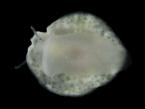
underside
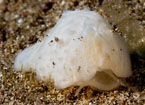
front
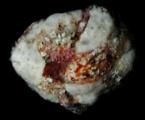
highly patchy
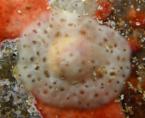
without patches
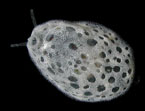
young
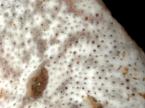
model?
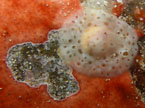
feeding

shell
_______________
GALLERY

|
Lamellaria sp. #5
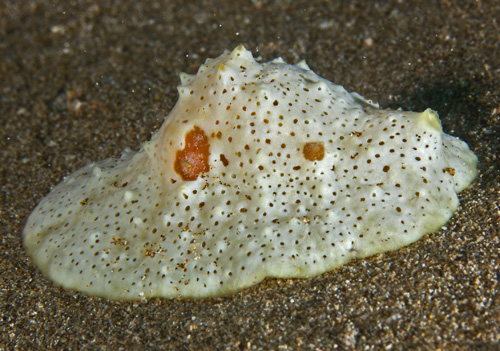
Maximum size: about 20 mm (estimated from photos).
Identification:
This
species
has low, rounded ridges on its dorsal surface that become more
prominent tubercles in fully mature animals, particularly in the center
of the dorsum. It's
dorsum is completely or partially covered with opaque-white pigment
granules with regularly spaced clear spots. There are usually white flecks on the
underside of the foot.
Natural history:
Lamellaria sp.
#5
is a moderately common species found in moderately protected to moderately exposed rocky
habitats and in Halimeda kanaloana beds at depths of about 5-18 m
(17-60 ft). It appears to mimic a white didemnid tunicate that is
common in its habitat and may feed on it. However, in the only photo we
have of it on a tunicate with feeding damage, it's on an orange
didemnid. It crawls with a repetitive jerking motion when on sand.
Distribution:
Maui, Oahu and French Frigate Shoals: probably widely distributed in the Indo-Pacific.
Taxonomic notes: There is some uncertainty in separating this species from other listed species of Lamellaria. It was probably first
recorded
in
Hawaii from Kapalua Bay, Maui by CP in 1994. It may be Marsenia herberti as illustrated in Fassio, et. al. (2023).
Photo: Ralph Turre: side; about 20 mm (estimated from photos): Maalaea Bay, Maui; June 21, 2014.
Observations and comments:
Note
1: ( )
|
|









